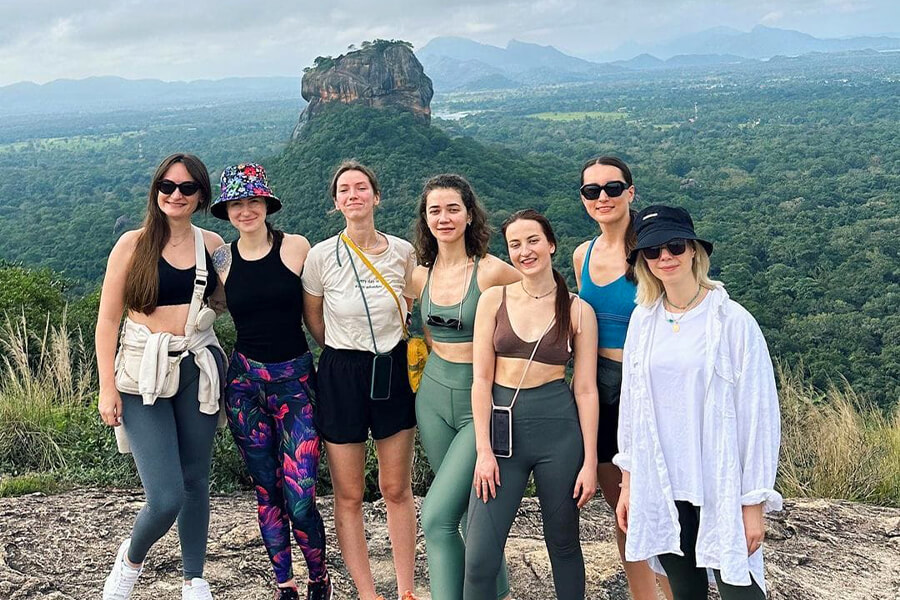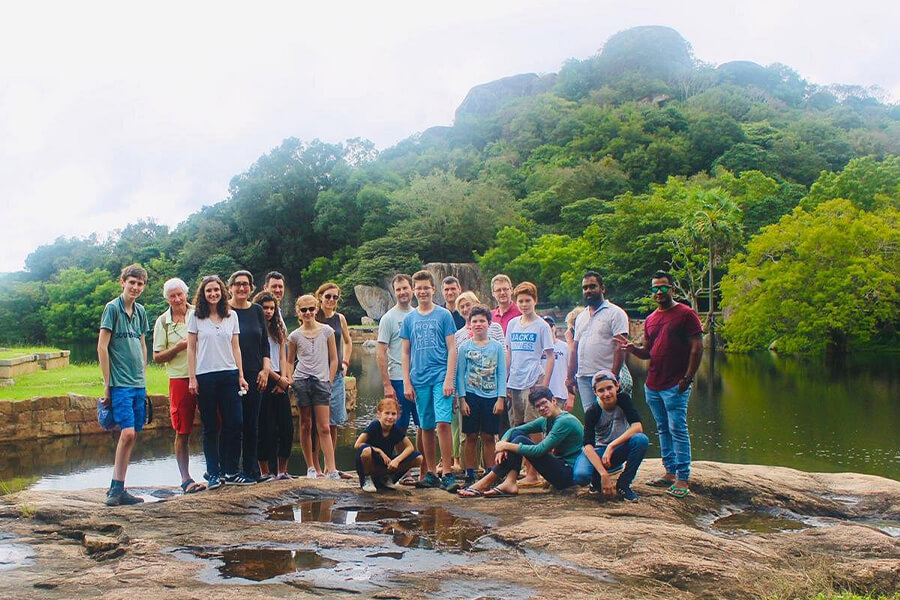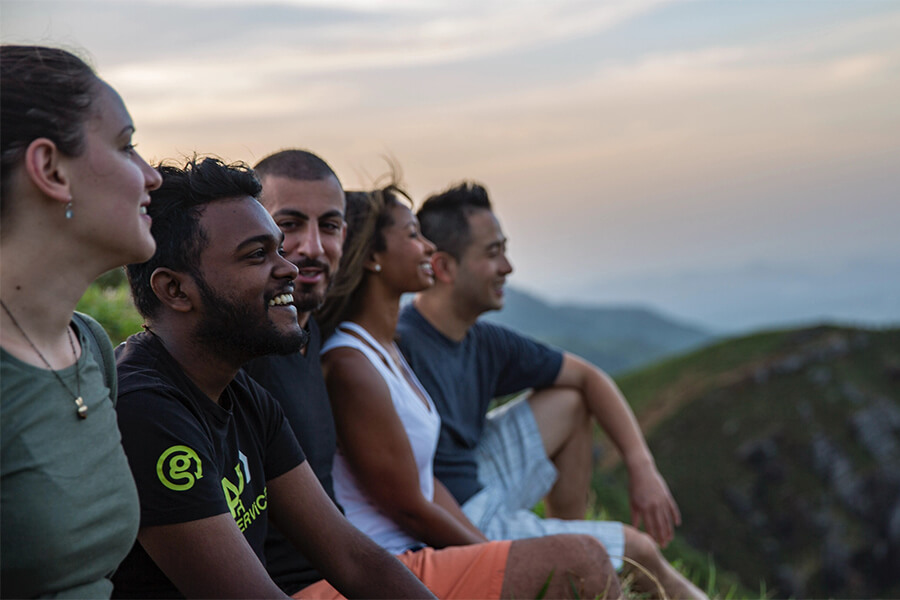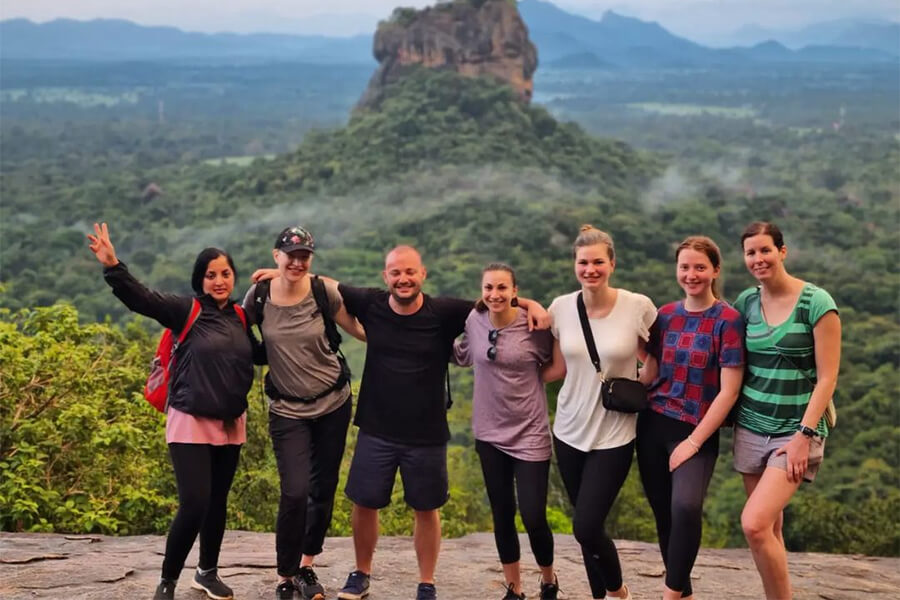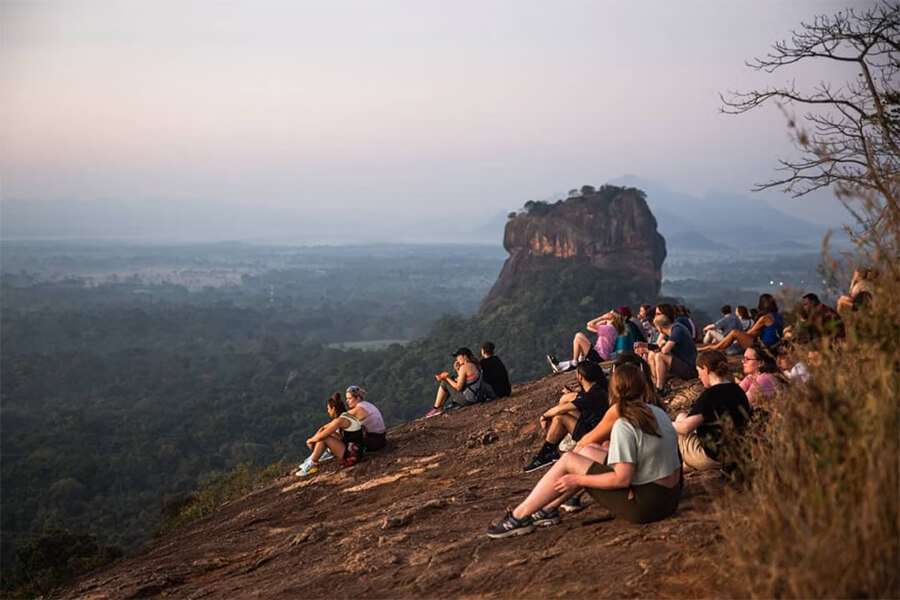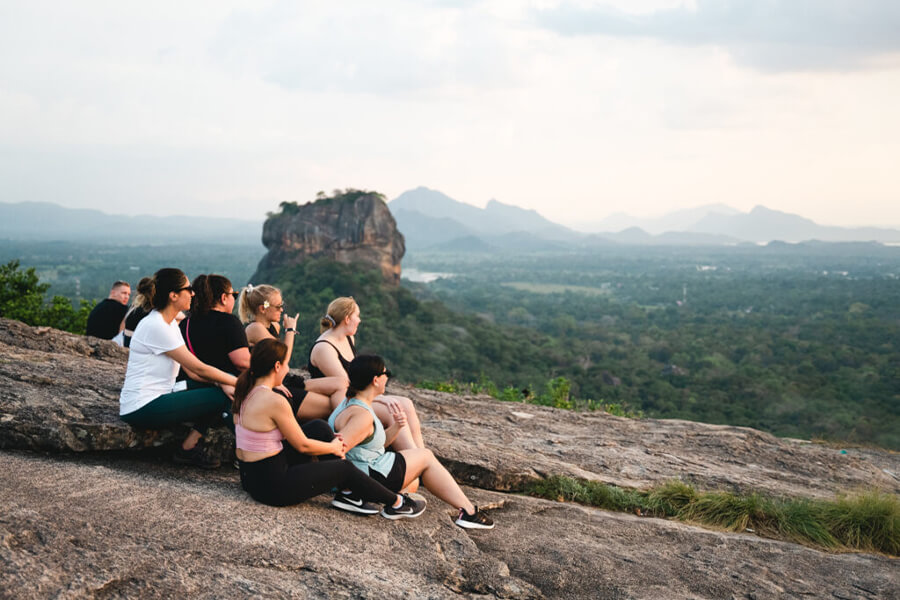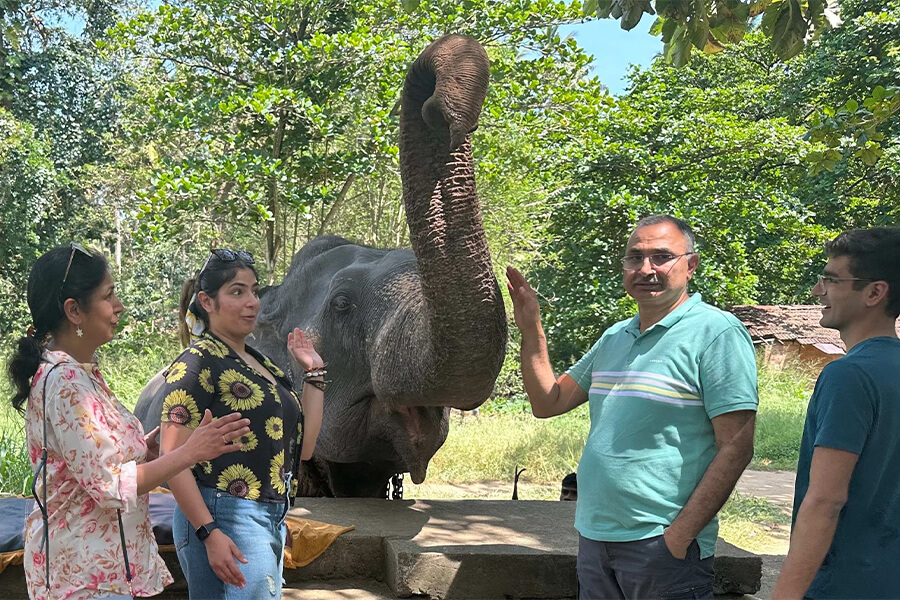If you’re planning tour packages Sri Lanka’s bustling capital, understanding Sri Lanka weather in Colombo is just as important as choosing your hotel or planning your sightseeing route. Colombo sits on the island’s west coast in the “wet zone” and has a classic tropical rainforest climate: hot, humid, and with rain possible in every month of the year. There is no true cold season – only wetter and drier periods.
Long-term climate records show daytime temperatures hovering around 30–31°C most of the year, with nights rarely dropping below 23–25°C. April is typically the hottest month, while January is the “coolest” – though even then, the difference is only a couple of degrees. What changes most in Sri Lanka weather in Colombo is rainfall: two monsoon-influenced wet peaks (around April–June and September–November) and relatively drier spells in January–February and parts of July–August.
For travelers, that means you can visit year-round, but you should pack expecting heat, humidity and at least some showers. The weather in Colombo Sri Lanka can shift quickly from blazing sunshine to a short, intense downpour – and back again within an hour. Having advised many visitors on city stays, stopovers and coastal trips, I can say that those who enjoy Colombo Sri Lanka most are the ones who respect the climate: light clothing, plenty of hydration, flexible plans, and an umbrella or light rain jacket in their daypack.
Below is a practical month-by-month breakdown of weather in Colombo, followed by clear suggestions on the best times to visit depending on your priorities.
Monthly Guide to Weather at Colombo Sri Lanka
Overall, Sri Lanka weather in Colombo is consistently hot and humid, with around 12 hours of daylight year-round and high UV levels that call for good sun protection. Rain falls in all months, but some periods are noticeably wetter.
Use this monthly guide to understand how the weather in Colombo Sri Lanka will feel on the ground – and how to adapt your packing list and travel plans.
Colombo Sri Lanka Weather in January
January is one of the more comfortable months for weather in Colombo. Temperatures are warm (roughly 27–30°C most days), humidity is still high but slightly less oppressive than in the pre-monsoon months, and rainfall is relatively modest compared with later in the year.
Showers tend to come as short bursts rather than all-day rain. Sea conditions are usually good, making January a pleasant time to combine Colombo Sri Lanka with beach stays further south or activities like walking along Galle Face Green in the evening breeze. For many visitors, January’s weather in Colombo Sri Lanka strikes a nice balance between sunshine, manageable humidity, and fewer disruptions from heavy storms.
Practical tip: pack light cotton or linen, and a compact umbrella. Early morning city walks are ideal before the day heats up.
Colombo Sri Lanka Weather in February
February is typically the driest month in Colombo Sri Lanka, with some of the lowest average rainfall of the year and fewer rainy days. The air is still warm and humid, but the skies are often clearer, and sunshine hours are high. This makes February one of the most appealing times for urban sightseeing, rooftop dining and sunset strolls.
During this period, weather in Colombo is particularly favorable for travelers who dislike heavy rain but don’t mind heat. It’s also a good month for photography, as you’re more likely to catch blue skies and clean coastal views.
Practical tip: UV levels are extreme even when it’s slightly hazy. Use strong sunscreen, sunglasses and a hat whenever you’re outdoors in the weather in Colombo Sri Lanka.
Colombo Sri Lanka Weather in March
In March, temperatures nudge up and the atmosphere feels hotter and stickier. Average daytime highs are around 31–32°C, and nights stay warm. Rainfall begins to increase ahead of the southwest monsoon, but you still get plenty of sunny intervals.
Travelers often notice that weather in Colombo during March feels more intense even if rainfall totals aren’t yet at their peak – it’s the combination of higher heat, humidity and strong sun. Afternoon showers and thunderstorms become more frequent, which can briefly cool the air.
Practical tip: schedule indoor activities (museums, shopping malls, spa treatments) during mid-afternoon when the heat and humidity peak, and enjoy outdoor sightseeing early morning or late afternoon.
Colombo Sri Lanka Weather in April
April is usually the hottest month of the year in Colombo Sri Lanka. Average temperatures hover around 29°C overall, with daytime highs often reaching 32°C and nights staying sultry. This is also when the first main rainy season really gets underway, with heavy showers and thunderstorms becoming common, especially later in the month.
For visitors, Sri Lanka weather in Colombo in April can feel challenging if you’re not used to tropical heat. At the same time, it’s an important cultural period, with Sinhala and Tamil New Year festivities usually taking place in mid-April. Streets can be lively, and many locals take holidays, which adds a festive feel despite the heat.
Practical tip: stay in accommodation with reliable air-conditioning, and be prepared for sudden downpours that can briefly flood streets. Waterproof sandals or quick-dry shoes are useful in this kind of weather in Colombo Sri Lanka.
Colombo Sri Lanka Weather in May
May is among the wettest months as the southwest monsoon takes full effect along the west coast. Many years see May and October/November as peak months for rainfall in Colombo Sri Lanka, with high monthly totals and many days seeing heavy showers.
Despite the rain, temperatures remain warm. Weather in Colombo at this time often alternates between humid, overcast conditions and intense downpours, sometimes accompanied by thunderstorms and gusty winds. Localized flooding and traffic delays can occur.
Practical tip: if you visit in May, keep your plans flexible. Focus on indoor experiences – cafés, galleries, shopping, cooking classes – and treat clear spells as a bonus rather than a guarantee.
Colombo Sri Lanka Weather in June
June remains within the southwest monsoon period, but in many years the heaviest downpours have eased slightly compared with May. Rain is still frequent, and humidity is very high – often above 80–90% at times. Skies are frequently cloudy or hazy, and seas can be rough along the west and southwest coasts.
For travelers, Sri Lanka weather in Colombo in June can feel very “tropical”: warm, damp air, greyish skies, and sudden showers. However, you may also benefit from fewer tourists and lower hotel rates compared with the driest months.
Practical tip: choose centrally located accommodation to minimize time stuck in traffic during heavy rain, and allow extra time for airport transfers in this kind of weather in Colombo Sri Lanka.
Colombo Sri Lanka Weather in July
July is technically still in the southwest monsoon season, but in practice there are often more settled intervals. Average rainfall drops compared with May and June, and there are more dry hours between showers, though the air remains hot and humid.
Many experienced travelers like July because weather in Colombo offers a workable compromise: it’s not as wet as the peak monsoon months, but it’s also outside the main tourist high season. Showers can still be heavy, especially in the late afternoon or evening, yet you often get bright mornings and occasional sunny days.
Practical tip: carry a lightweight rain jacket or poncho, but also bring breathable clothing – a thick waterproof can feel uncomfortable in this warm, damp weather in Colombo.
Colombo Sri Lanka Weather in August
August is similar to July: still within the broader wet season, but often with manageable conditions for city travel. Showers remain common but are interspersed with warm, dry periods. Temperatures hover around 30°C by day and mid-20s at night.
This is a popular holiday month for travelers from Europe and the Middle East, so the city can be busy even if weather in Colombo is not at its driest. For many visitors, the pattern of “a few hours of rain, then clear skies” is perfectly acceptable as long as they plan around it.
Practical tip: in August’s weather in Colombo Sri Lanka, aim for flexible sightseeing. Combine outdoor attractions (temples, colonial architecture, lakeside walks) with indoor stops in air-conditioned cafés or malls to recover from the humidity.
Colombo Sri Lanka Weather in September
September is a transitional month, moving from the southwest monsoon toward the second main rainy peak of the year around October–November. Rainfall starts to ramp up again, and humidity stays high.
Travelers will notice that Sri Lanka weather in Colombo can be unpredictable: some years see more settled early-September conditions, while other years bring frequent showers. Either way, the heat is consistent, and you should expect at least some rain during any stay.
Practical tip: if your main focus is elsewhere in Sri Lanka (for example, the “dry zone” or east coast), consider using Colombo Sri Lanka as a short stopover rather than a long base in September, given this mixed weather in Colombo.
Colombo Sri Lanka Weather in October
October is often one of the wettest months of the year in Colombo Sri Lanka, with high rainfall totals and many days experiencing significant showers. Intense downpours, thunderstorms and occasional flooding are all possible when the inter-monsoon is active.
In practical terms, Sri Lanka weather in Colombo in October can disrupt outdoor plans. However, the city is well equipped with indoor attractions and modern infrastructure, so most trips still run smoothly with the right expectations.
Practical tip: this is a time when flexible bookings are particularly advisable, as heavy rain anywhere in the region can affect flights and road journeys, not just local weather in Colombo Sri Lanka.
Colombo Sri Lanka Weather in November
November continues the wet pattern, often with very high monthly rainfall. Many years see November ranked as one of the wettest months in Colombo Sri Lanka, with frequent heavy showers. Despite this, temperatures remain firmly in the tropical range, with warm, humid air dominating.
For visitors, weather in Colombo in November means planning for multiple rainy spells each day, often with impressive tropical thunderstorms. Streets may flood briefly, and traffic can slow, but between showers you still get vivid greenery, dramatic skies and warm sea temperatures.
Practical tip: waterproof your day bag (or line it with a dry sack), and avoid planning tight, multi-stop itineraries across town during peak traffic hours in this kind of weather in Colombo Sri Lanka.
Colombo Sri Lanka Weather in December
By December, the heaviest rains of the late-year wet season gradually ease, though significant showers are still common, especially earlier in the month. Temperatures remain warm but can feel slightly more comfortable compared with the hottest months, especially when evening breezes pick up along the coast.
Because of the combination of generally improving weather in Colombo, festive atmospheres, and school holidays in many countries, December is a popular travel month. Hotels book up early, and prices can be higher.
Practical tip: if you’re visiting for Christmas or New Year, secure accommodation well in advance and pack for both warm sunshine and passing showers in the weather in Colombo Sri Lanka.
Best Time to Visit Colombo Sri Lanka
The “best” time to experience weather in Colombo depends on your travel style, tolerance for heat and rain, and broader itinerary around the island.
For the Driest, Most Comfortable Conditions
If your priority is minimizing rain and maximizing easy sightseeing, the top recommendations are:
- January and February – Warm, relatively drier months with plenty of sunshine and lower rainfall compared with the monsoon peaks.
- Late December and early March – Also generally favorable, though March feels hotter.
During these windows, the weather in Colombo is well suited to city exploration, coastal walks, and sunset gatherings along Galle Face Green. This is when Colombo Sri Lanka feels most “user-friendly” for first-time visitors.
For Value and Fewer Crowds
If you don’t mind some rain and want better value:
- July and August – Still within the broader wet season, but often with workable patterns of showers and dry gaps.
- Early September – Transitional, with mixed but manageable conditions in many years.
Here, weather in Colombo is less predictable, yet it rarely rains solidly for days on end. With flexible planning, you can combine sightseeing with downtime in cafés, spas and shopping centers, and you may benefit from better hotel deals outside the absolute high season.
For Festivals and Local Color
If you’re motivated by culture as much as climate:
- Mid-April – Sinhala and Tamil New Year brings celebrations, rituals and a festive atmosphere, but the heat is intense, and showers are common.
- May and November – Important religious observances such as Vesak (often in May) can make Colombo Sri Lanka especially atmospheric, though these months are also among the wettest.
In these periods, accept that weather in Colombo Sri Lanka may not be ideal in a textbook sense. Instead, focus on the richness of street life, illuminated temples, and local traditions, and build your daily schedule around drier windows.
Practical Packing and Planning Tips
Regardless of the month, weather in Colombo shares some constant traits: heat, humidity, and strong sun. To stay comfortable and safe:
- Clothing: Light, breathable fabrics (cotton, linen, moisture-wicking synthetics). Avoid heavy jeans or thick jackets; you won’t need them.
- Rain gear: Compact umbrella and/or light rain jacket. Streets can puddle quickly during downpours, so quick-dry footwear or sandals with good grip are practical.
- Sun protection: High-SPF sunscreen, sunglasses, and a wide-brimmed hat are essential in the strong tropical UV typical of weather in Colombo Sri Lanka.
- Health: Dehydration creeps up fast in this climate. Carry water, take regular breaks in the shade or indoors, and consider oral rehydration salts if you’re walking a lot.
- Scheduling: Plan outdoor sightseeing early in the morning or late in the afternoon. Reserve mid-day for indoor visits (museums, temples with shaded courtyards, cafés) or a rest at your hotel.

